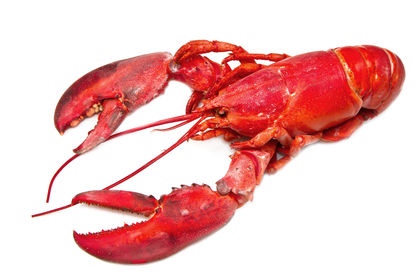Stamp: Clipperton Atoll, Lobsters (United States of America 1895)
Clipperton Atoll, Lobsters (United States of America 1895)
01 March (United States of America ) within release Clipperton Island goes into circulation Stamp Clipperton Atoll, Lobsters face value 50 United States cent
| Stamp Clipperton Atoll, Lobsters in catalogues | |
|---|---|
| Colnect codes: | Col: US-CLI 1895-09 |
Stamp is square format.
Printed in San Francisco by the local agents of the Oceanic Phosphate Company that was operating the guano business on Clipperton Island from 1893 to October 1897. Intended to pay postage on letters from Clipperton to San Francisco.Also in the issue Clipperton Island:
- Stamp - Clipperton Atoll, Lobsters face value 25;
- Stamp - Clipperton Atoll, Lobsters face value 50;
- Stamp - Clipperton Atoll, Red-Footed Boobies, Lobster face value 10;
- Stamp - Clipperton Atoll, Red-Footed Boobies, Lobsters face value 1;
- Stamp - Clipperton Atoll, Red-Footed Boobies, Lobsters face value 2;
- Stamp - Clipperton Atoll, Red-Footed Boobies, Lobsters face value 3;
- Stamp - Clipperton Atoll, Red-Footed Booby face value 4;
- Stamp - Clipperton Atoll, Red-Footed Booby face value 5;
- Stamp - Clipperton Atoll, Red-Footed Booby face value 8;
- Stamp - Clipperton Atoll, Red-Footed Booby, Lobster face value 1;
Stamp Clipperton Atoll, Lobsters it reflects the thematic directions:
Crustaceans are a group of arthropods that are a part of the subphylum Crustacea (/krəˈsteɪʃə/), a large, diverse group of mainly aquatic arthropods including decapods (shrimps, prawns, crabs, lobsters and crayfish), seed shrimp, branchiopods, fish lice, krill, remipedes, isopods, barnacles, copepods, opossum shrimps, amphipods and mantis shrimp. The crustacean group can be treated as a subphylum under the clade Mandibulata. It is now well accepted that the hexapods (insects and entognathans) emerged deep in the Crustacean group, with the completed group referred to as Pancrustacea. The three classes Cephalocarida, Branchiopoda and Remipedia are more closely related to the hexapods than they are to any of the other crustaceans (oligostracans and multicrustaceans)
A map is a symbolic depiction emphasizing relationships between elements of some space, such as objects, regions, or themes. Many maps are static, fixed to paper or some other durable medium, while others are dynamic or interactive. Although most commonly used to depict geography, maps may represent any space, real or imagined, without regard to context or scale, such as in brain mapping, DNA mapping, or computer network topology mapping. The space being mapped may be two dimensional, such as the surface of the earth, three dimensional, such as the interior of the earth, or even more abstract spaces of any dimension, such as arise in modeling phenomena having many independent variables. Although the earliest maps known are of the heavens, geographic maps of territory have a very long tradition and exist from ancient times. The word "map" comes from the medieval Latin Mappa mundi, wherein mappa meant napkin or cloth and mundi the world. Thus, "map" became the shortened term referring to a two-dimensional representation of the surface of the world.


